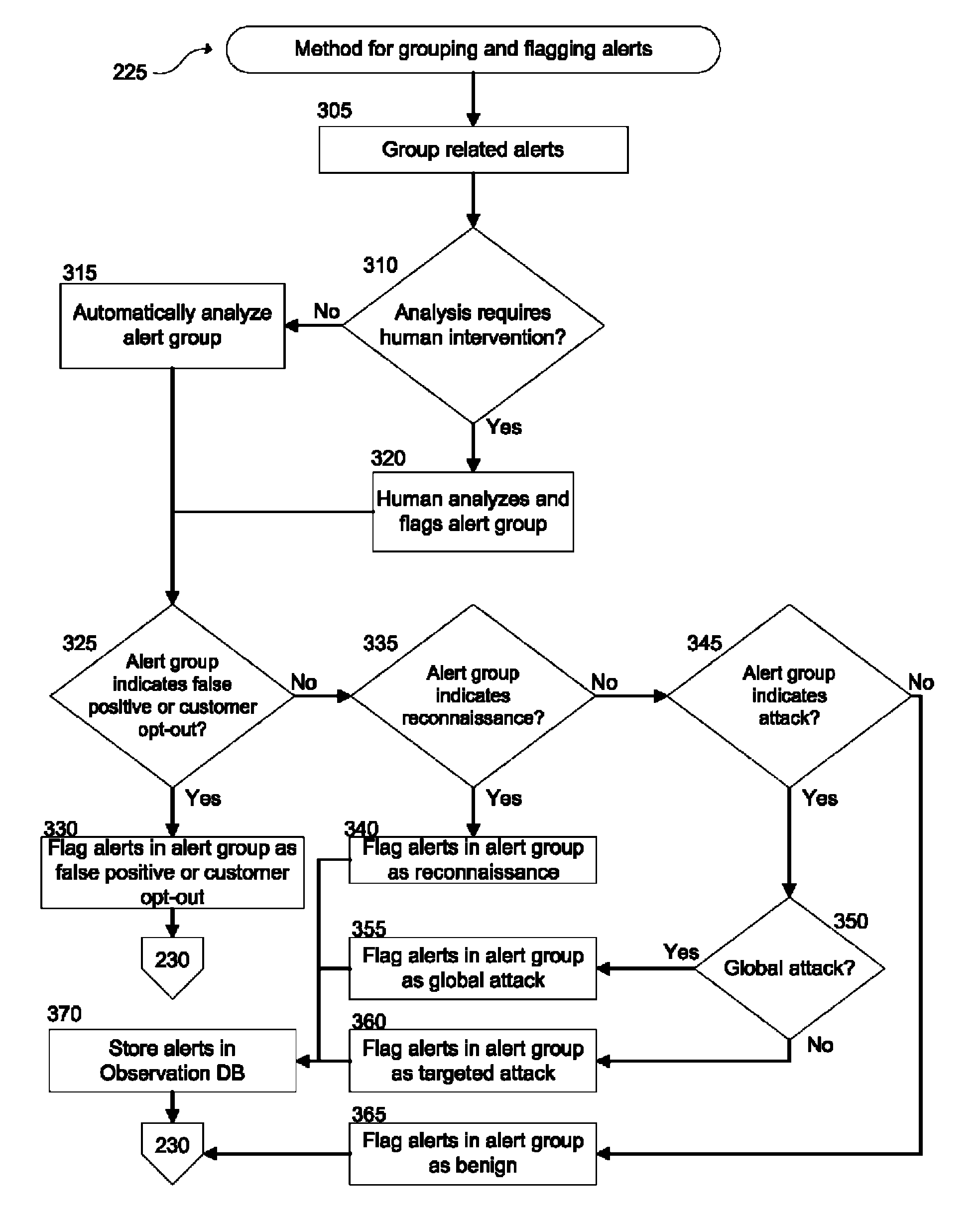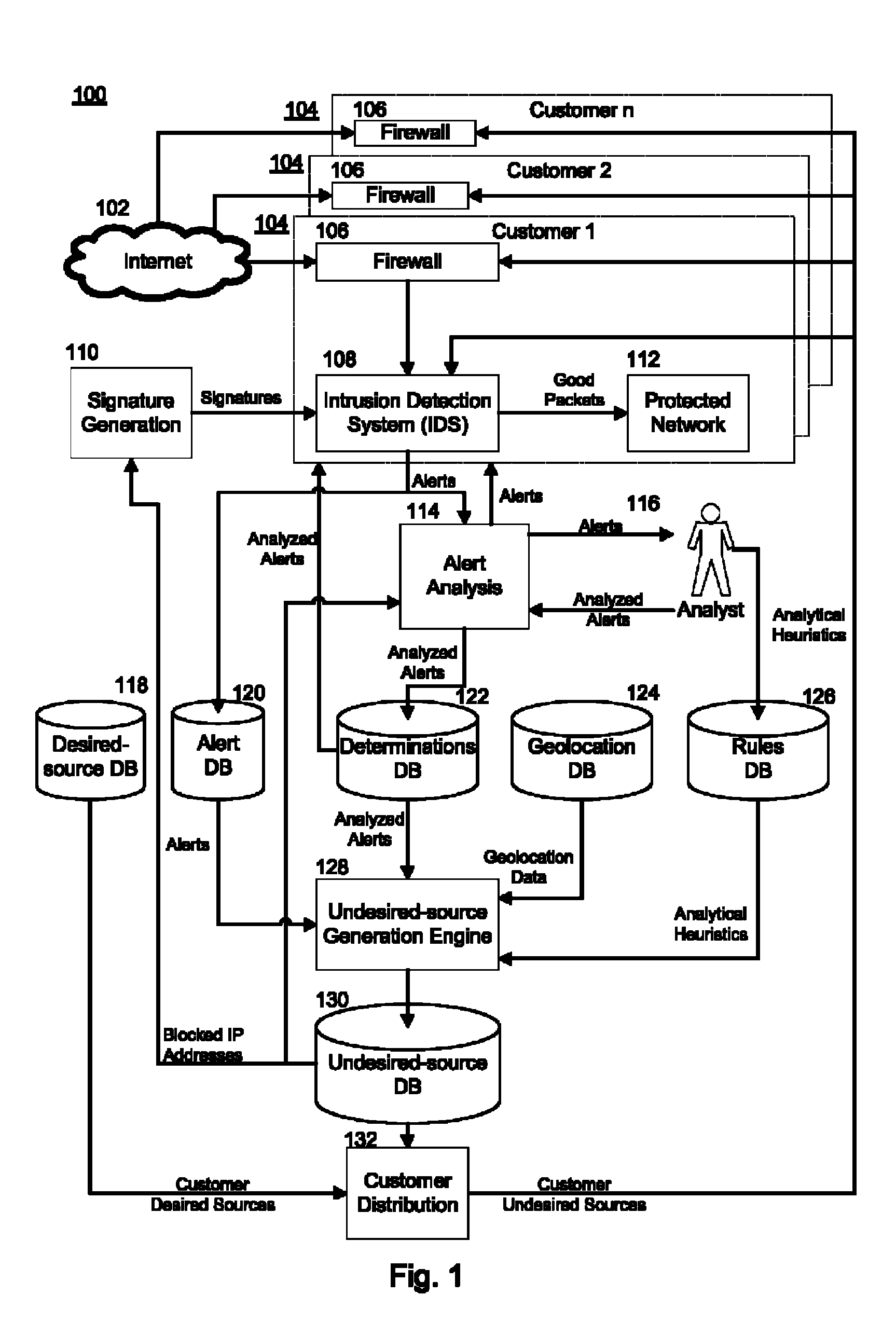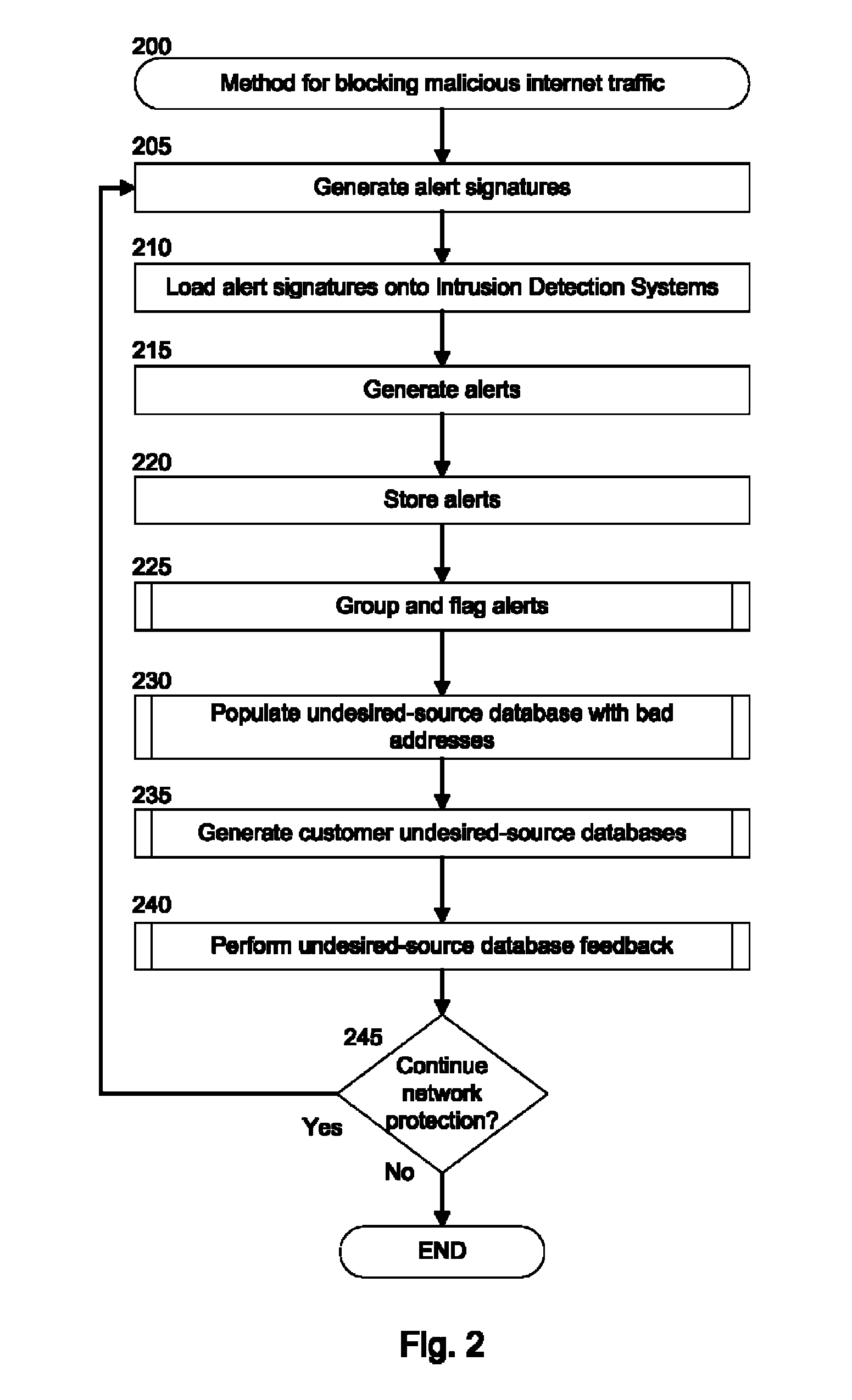System and method for identification and blocking of unwanted network traffic
a network traffic and unwanted technology, applied in the field of network security, can solve the problems of network that provides an internet interface at risk of attack, improvement does not come without risk, and business cannot compete withou
- Summary
- Abstract
- Description
- Claims
- Application Information
AI Technical Summary
Benefits of technology
Problems solved by technology
Method used
Image
Examples
Embodiment Construction
[0023]The inventive network protection system can determine, based on signatures of attacks, whether network traffic is indicative of an attack. The network protection system can generate alerts indicating that network traffic is indicative of an attack. The alerts can then be transmitted to an alert analysis system where the alerts can be flagged with a determination of whether the alert represents reconnaissance, a global attack, a targeted attack, a false positive, or if the alert is benign.
[0024]The alert analysis system can automatically (without the assistance of an analyst) flag an alert with a determination. Alternatively, however, the alert analysis system can transmit the alert to a trained analyst who can flag the alert with a determination. Flagged alerts can then be analyzed using heuristics to determine whether the alerts indicate that the source of the traffic that spawned the alert should be blocked from communicating with a protected network. The determination of wh...
PUM
 Login to View More
Login to View More Abstract
Description
Claims
Application Information
 Login to View More
Login to View More - R&D
- Intellectual Property
- Life Sciences
- Materials
- Tech Scout
- Unparalleled Data Quality
- Higher Quality Content
- 60% Fewer Hallucinations
Browse by: Latest US Patents, China's latest patents, Technical Efficacy Thesaurus, Application Domain, Technology Topic, Popular Technical Reports.
© 2025 PatSnap. All rights reserved.Legal|Privacy policy|Modern Slavery Act Transparency Statement|Sitemap|About US| Contact US: help@patsnap.com



